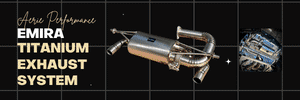LotusAmateur
Well-known member
Hi all,
I know that the Emira body panels are made of composites. I have never owned a car with composite panels before, usually aluminium or steel. But, seems that Lotus have a lot of experience with composites in other models. So a lot of other forum members are veterans at it.
From an ownership perspective, what do I need to keep in mind for composites vs aluminium/ steel? Any specific considerations? I will do a front and side PPF and ceramic all around.
Sorry if this was asked before but I could not find it.
Thanks!
I know that the Emira body panels are made of composites. I have never owned a car with composite panels before, usually aluminium or steel. But, seems that Lotus have a lot of experience with composites in other models. So a lot of other forum members are veterans at it.
From an ownership perspective, what do I need to keep in mind for composites vs aluminium/ steel? Any specific considerations? I will do a front and side PPF and ceramic all around.
Sorry if this was asked before but I could not find it.
Thanks!




